Ottawa has the highest concentration of tech talent in North America, comprising 13.3 per cent of the total work force in the city – that’s more than the San Francisco Bay Area with 11.6 per cent, according to CRBE’s 2023 Tech Talent report. So, it’s no surprise to find innovative auto tech featured at this year’s TCXpo, a national smart mobility technology demonstration day designed to showcase Canadian innovation, in Ottawa.
Set at Area X.O, a research and development complex located on 1,800 acres of land in the nation’s capital, it’s the only testing and training facility of its kind in Canada used to test everything from connected and autonomous vehicles to drones and advanced robots. Here are five of our favourite Canadian-made cutting-edge mobility and auto technologies featured at the show.
1. Robot to help keep bike lanes clear
This little white robot is dubbed “Street Smart” by Ottawa-based engineering company InDro Robotics. It travels along bike lanes checking for debris and other obstacles to ensure the path is clear for cyclists. If a drain is blocked by leaves or there’s ice on the road, it reports it to the city and cyclists who can access the information using a smartphone app and find a safer route. This larger “Sentinel” robot is equipped with sensors, lidars and cameras similar to those found on a fully autonomous car. If you stand in front of this robot, it will stop and make its way around you to avoid a collision.
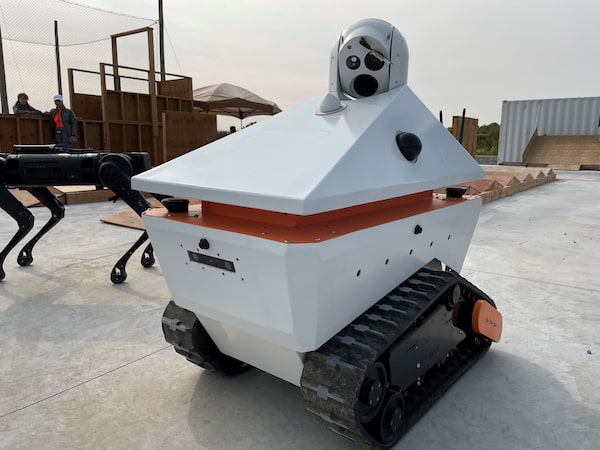
The 'Street Smart' robot developed by InDro Robotics to help clear bike lanes is exhibited at TCXpo, a national smart mobility technology demonstration day designed to showcase Canadian innovation, in Ottawa.Petrina Gentile/The Globe and Mail
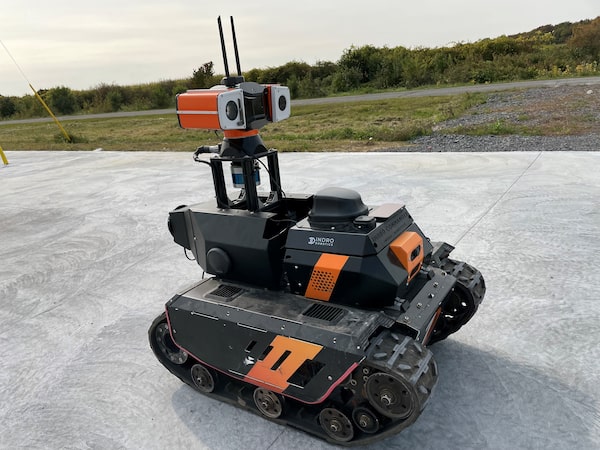
The 'Sentinel' is fitted with sensors, lidars and cameras similar to those found on a fully autonomous car.Petrina Gentile/The Globe and Mail
2. An autonomous tractor
This is Canada’s first after-market installed Level 5 autonomous tractor. It can drive and steer by itself – no farmer is needed at the wheel. GPS Ontario, started by a father-and-son duo, lets farmers buy a kit with sensors, obstacle avoidance cameras and centimetre-accuracy GPS, to add to an existing tractor so it becomes smarter, more accurate and efficient in its planting and more profitable in its yields. “When we plant fertilizer in the ground with our GPS accuracy, we can plant the seed directly back on top of the fertilizer. We can reduce fertilizer by up to 30 per cent, increase our yields by 15 per cent and reduce our greenhouse gas and nitrous oxide emissions by 85 per cent,” said Jordan Wallace, advanced precision solutions engineer and design specialist at GPS Ontario. The after-market kit costs US$74,000.
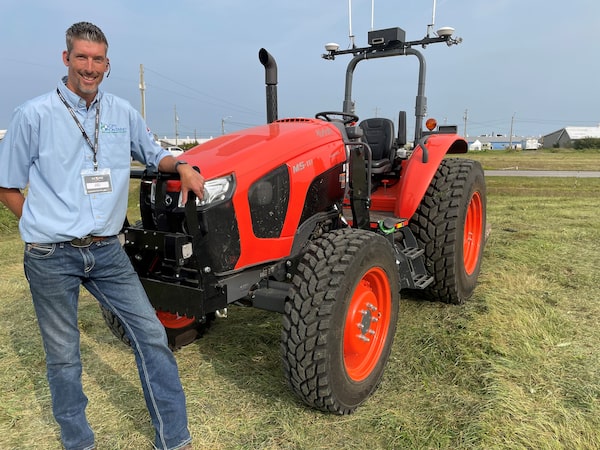
Jordan Wallace, advanced precision solutions engineer and design specialist at GPS Ontario, stands in front of a tractor the company has developed to work autonomously.Petrina Gentile/The Globe and Mail
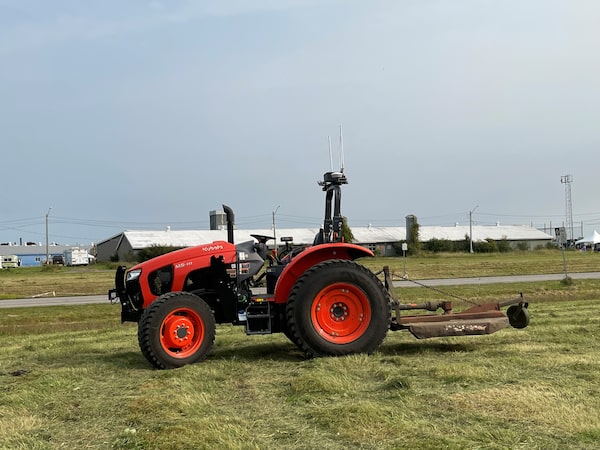
A Level 5 autonomous tractor with equipment developed by GPS Ontario.Petrina Gentile/The Globe and Mail
3. Making self-driving cars work in the snow
Sensor Cortek tests its artificial intelligence algorithms on advanced driver-assistance systems and autonomous vehicles using this Lexus RX450h SUV. The front of this vehicle is outfitted with extra sensors, lidar and radar to collect data in severe weather conditions with the goal of teaching autonomous cars how to drive in a snowstorm. Last year during severe winter storms, co-founder Fahed Hassanat drove this vehicle on the 417 Highway and Ottawa neighbourhoods like the Glebe to gather data in the worst conditions possible. “We want to make sure that our AI can handle situations when the sensors can almost see nothing during very deteriorating conditions and low visibility,” said Hassanat. “We collect the data, go back to our lab and take that data, sample it, transform it and feed it into our AI so later on our AI can be deployed on vehicles like this to make decisions of higher quality versus AI that has not seen the data we’ve collected.”
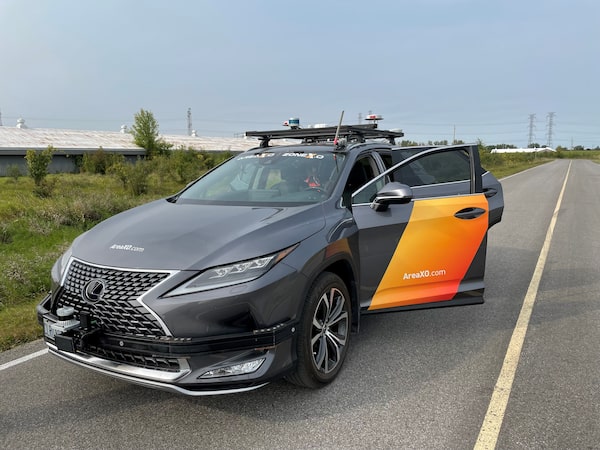
Sensor Cortek uses a Lexus RX450h such as this to help improve driver-assistance systems in the snow.Petrina Gentile/The Globe and Mail
4. Easier charging in a condo
JPlug.io helps people living in condominiums and multifamily dwellings have easy access to electric-vehicle charging stations by reducing the amount of infrastructure needed for charging an EV in a condo. Chief executive officer Jorge Pantoja says you don’t have to use traditional sub-metering or load balancing because everything is controlled directly by JPlug’s software. The software can connect to the hardware using an app regardless of the charger or vehicle manufacturer, making it easier and cheaper for people to access charging stations. “Our solution consists of two parts. With a monthly subscription we reduce the amount of investment that needs to be done initially and the second point is the technology part that reduces the amount of infrastructure needed to make an installation in a condominium, effectively making it easier and more affordable for everyone,” said Pantoja.
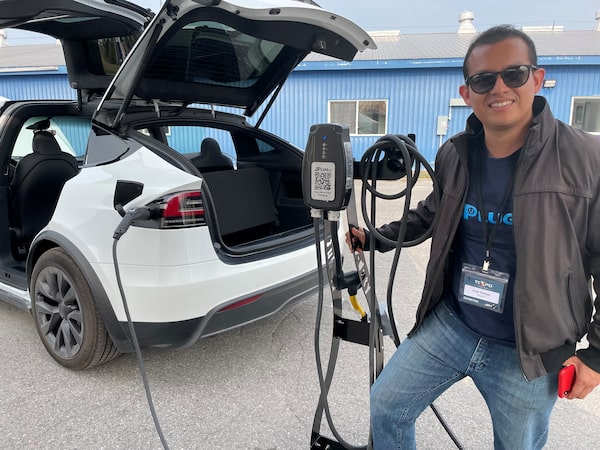
JPlug.io CEO Jorge Pantoja with an electric-vehicle charger designed by his company.Petrina Gentile/The Globe and Mail
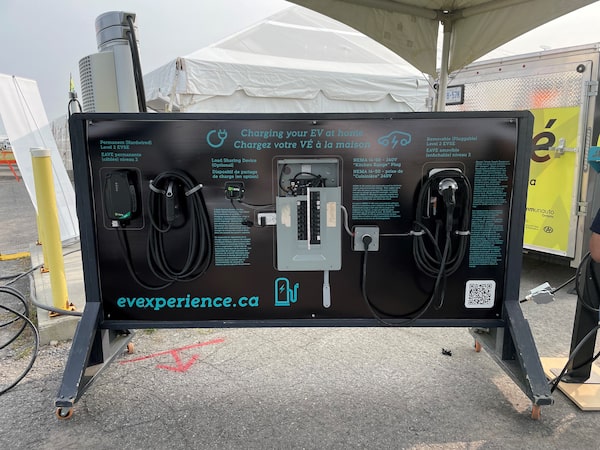
JPlug.io is designing tools to make EV charging in condos easier by reducing the amount of infrastructure that's required.Petrina Gentile/The Globe and Mail
5. Technology for a self-driving snowplow
This autonomous service vehicle, from Four DRobotics, is designed to operate non-stop in all weather conditions. It is outfitted with lidar, radar and thermal cameras. Recently, experts integrated this technology onto an unmanned snowplow and operated it on Area X.O’s test track, which has a railroad crossing and intersections. Often in the snow the blades will hit railway tracks and metal covers and get damaged because drivers can’t see them with the visible eye. But with this AI and technology, the plow could read the road profile and tell if there is a railroad crossing or manhole cover and automatically lift the blade and lower it after crossing the object. The test runs were successful and officials hope to get this technology operating on plows on city streets next year.
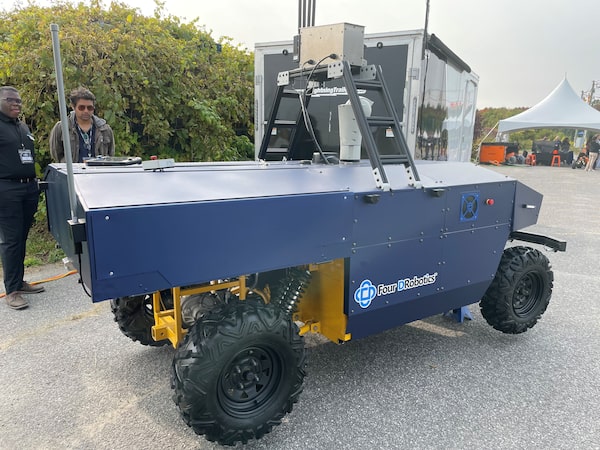
The technology on this Four DRobotics vehicle could be integrated onto a snowplow, making it drive autonomously.Petrina Gentile/The Globe and Mail
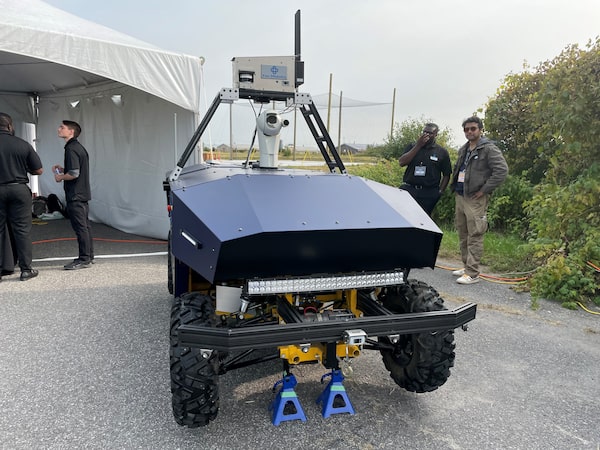
This self-driving snowplow can read the profile of the road and tell if there is a railroad crossing or manhole cover and automatically lift the blade and lower it after crossing the object.Petrina Gentile/The Globe and Mail
 Petrina Gentile
Petrina Gentile